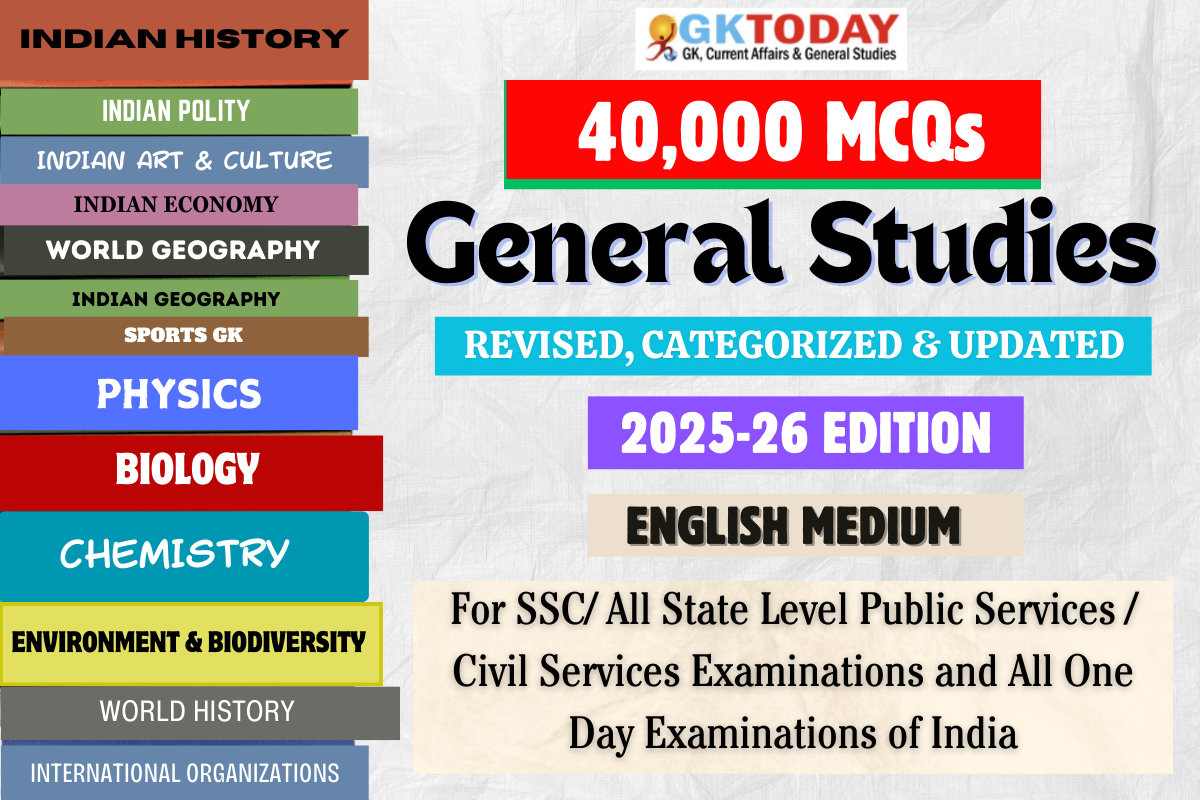Modern Indian History MCQs
Multiple choice questions on Modern Indian History & Freedom Struggle for General Studies and GK preparation of SSC, NDA, CDS, UPSC, UPPSC and State PSC Examinations.
21. Which of the following best depict the view of Gandhiji?
[A] All old traditions should be followed
[B] All old traditions should be discarded
[C] Only scientifically based traditions should be followed
[D] Those traditions should not be followed which are against our moral values
Show Answer
Correct Answer: D [Those traditions should not be followed which are against our moral values]
Notes:
Gandhiji said that it is good to swim in the waters of tradition but to sink in them is suicide. Traditions are not cast in stone. By their very nature, they are supposed to evolve constantly and meet the changing requirements of time and social contexts.
22. Who was the Viceroy when Attlee declared India’s Independence?
[A] Lord Wavell
[B] Lord Mountbatten
[C] Lord William Bentinck
[D] Lord Cornwallis
Show Answer
Correct Answer: B [Lord Mountbatten]
Notes:
Lord Mountbatten of Burma was the viceroy of India when Atlee declared Independence. The last Viceroy was asked by the Indian leaders to continue as the Governor-General of India. Jawaharlal Nehru became the Prime Minister of India and Sardar Vallabhbhai Patel became the Home Minister.
23. Which of the following represents the integration of Hindus and Muslims for a common cause?
[A] Khilafat Movement
[B] Quit India Movement
[C] Civil Disobedience Movement
[D] None of the above
Show Answer
Correct Answer: A [Khilafat Movement]
Notes:
The Khilafat movement is also known as the Indian Muslim movement. It was a pan-Islamist political protest campaign launched by Muslims of British India led by Shaukat Ali, Mohammad Ali Jauhar and Abul Kalam Azad to restore the caliph of the Ottoman Caliphate. When Mahatma Gandhi felt the need to launch a broader – based movement in India, he was certain that no such movement could be organized without getting the Hindus and Muslims together. He took up the Khilafat issue.
24. Arrange the following events in chronological order:
- Dandi March
- Simon Commission
- Poona Pact
- Gandhi Irwin Pact
Select the correct sequence:
[A] Dandi March, Simon Commission, Poona Pact, Gandhi Irwin Pact
[B] Poona Pact, Simon Commission, Dandi March, Gandhi Irwin Pact
[C] Simon Commission, Dandi March, Gandhi Irwin Pact, Poona Pact
[D] Poona Pact, Gandhi Irwin Pact, Simon Commission, Dandi March
Show Answer
Correct Answer: C [Simon Commission, Dandi March, Gandhi Irwin Pact, Poona Pact]
Notes:
- Simon Commission was established in 1927
- Dandi March occurred in 1930
- Gandhi Irwin Pact was signed in 1931
- Poona Pact occurred in 1932
25. Who among the following referred Mahatma Gandhi as the ‘Father of the nation’ first?
[A] Jawaharlal Nehru
[B] Vallabhbhai Patel
[C] C. Rajagopalachari
[D] Subhash Chandra Bose
Show Answer
Correct Answer: D [Subhash Chandra Bose]
Notes:
He was addressed with this title by Subhash Chandra Bose for the first time in his address on Singapore radio on July 6, 1944. But yes! He cannot be officially recognized as Father of the Nation under Article 18 [1].
26. Which one of the following was a journal founded by M.N. Roy?
[A] Kisan Sabha
[B] The Worker
[C] Vanguard
[D] Anushilan
Show Answer
Correct Answer: C [Vanguard]
Notes:
Vanguard was mouthpiece of Radical Democratic Party which was founded by M N Roy. Its editor was Ram Singh.
27. Consider the following statements:
1. The First Session of the Indian National Congress was held in Calcutta.
2. The Second Session of the Indian National Congress was held under the presidentship of DadabhaiNaoroji.
3. Both Indian National Congress and Muslim League held their sessions at Lucknow in 1916 and concluded the Lucknow Pact.
Which of the statements given above is, are correct?
[A] 1 and 2
[B] 2 only
[C] 2 and 3
[D] 3 only
Show Answer
Correct Answer: C [2 and 3]
Notes:
The Indian National Congress conducted its first session in Bombay from 28–31 December 1885 at the initiative of retired Civil Service officer Allan Octavian Hume. In 1883, Hume had outlined his idea for a body representing Indian interests in an open letter to graduates of the University of Calcutta.
In 1906, Naoroji was again elected president of the Indian National Congress.
28. In October 1920, who of the following headed a group of Indians gathered at Tashkent to set up a Communist Party of India?
[A] H. K. Sarkar
[B] P. C. Joshi
[C] M.C. Chagla
[D] M. N. Roy
Show Answer
Correct Answer: D [M. N. Roy]
Notes:
In October 1920, M. N. Roy headed a group of Indians gathered at Tashkent to set up a Communist Party of India. The other prominent persons include Abani Mukherjee and Mohd. Ali Mohd. Shafiq.
29. Which Act abolished the East India Company and transferred the powers of the government, territories and revenues to the British Crown?
[A] Charter Act of 1853
[B] Government of India Act, 1858
[C] Indian Councils Act of 1861
[D] Indian Councils Act of 1892
Show Answer
Correct Answer: B [ Government of India Act, 1858 ]
Notes:
The Government of India Act of 1858 or the Act of Good Government of India abolished East India Company. It replaced the President of the Board of Control with a Secretary of State of India, who in subordination to the Cabinet, was the fountain of authority as well as the Director of policy in India.
30. The battle of Plassey was fought in which year?
[A] 20th June 1757
[B] 23rd June 1757
[C] 3rd July 1757
[D] 4th August 1757
Show Answer
Correct Answer: B [23rd June 1757]
Notes:
The battle of Plassey was fought on 23rd June 1757. Sir-Ud-Daulah was captured and killed by Miran, the son of Mir Jafar on 2nd July 1757.

